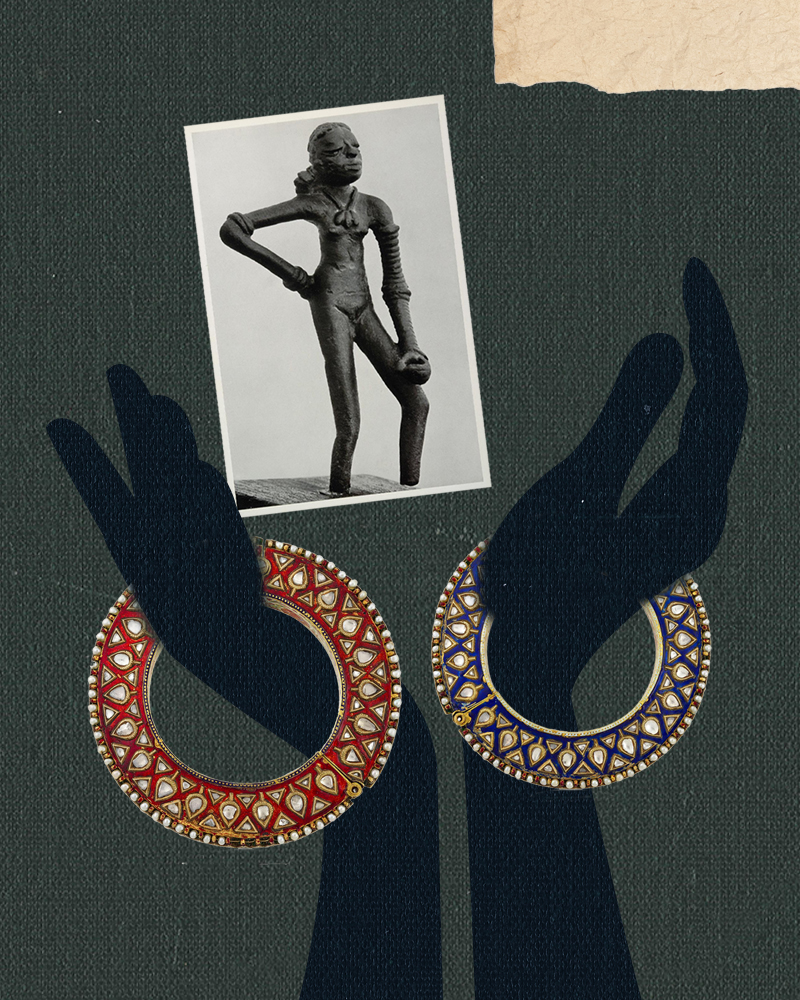The History & Chemistry Of The Gem With The Gentlemen
Historically, diamonds were known to be the crown jewel of only the most powerful men in the world – its Kings. What is it about a natural diamond that makes it the ultimate symbol of royalty through the ages, even for the modern day Maharajas?
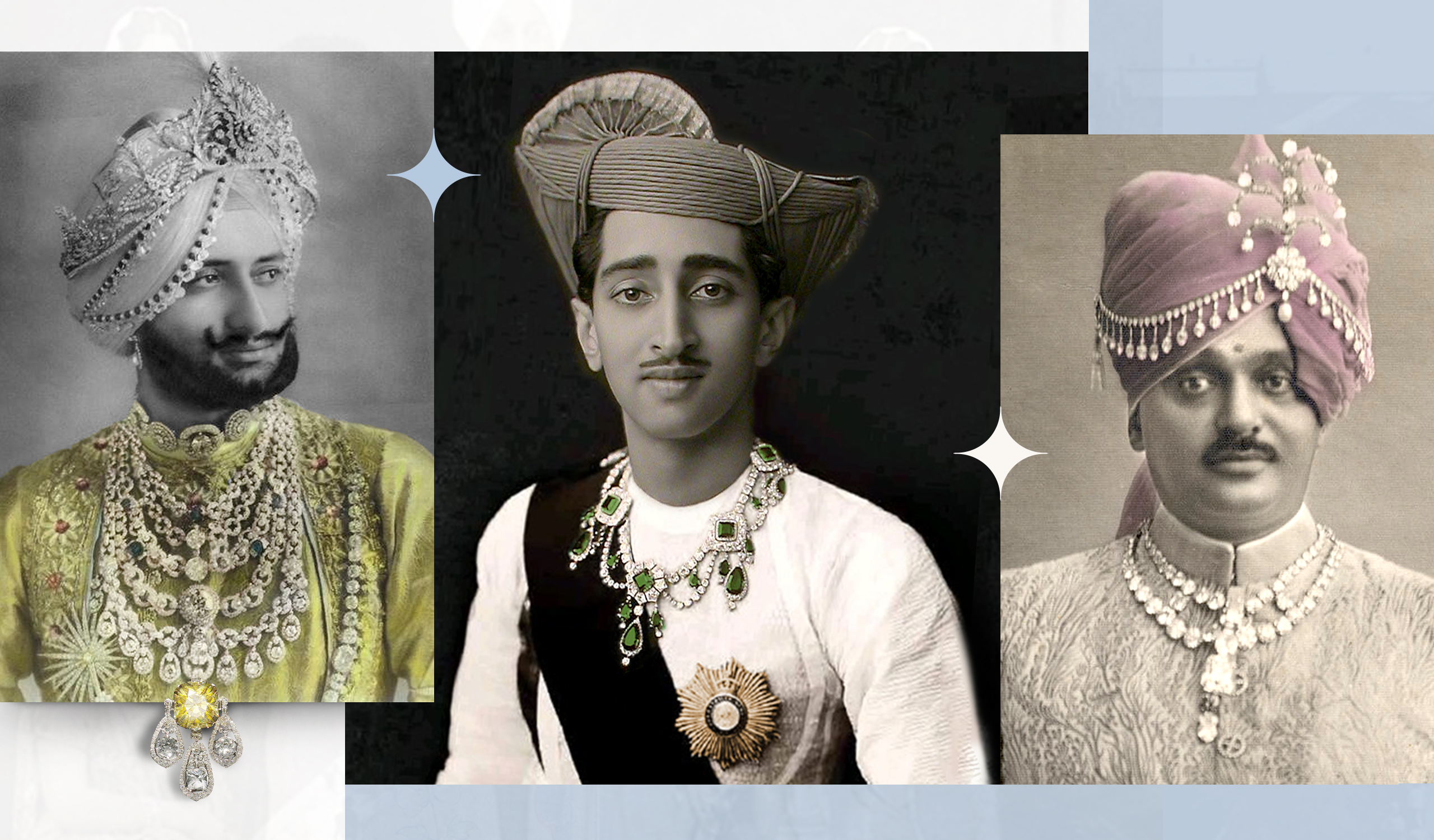
My first tryst with diamonds was when I was a child. My mother always told me the story of her favourite diamond – a single, sparkling solitaire, set in a gold band. It was a man’s ring – one she had inherited from her father. She couldn’t wear it – it was too big for her, she nonetheless loved to recount how my grandfather had loved the ring and worn it every day – and she hoped, someday, I would wear it too.
It was my mother who gave me my first natural diamond – this very ring – a century-old heirloom that stood as a testament to the intrinsic love between gentlemen and their gems.
What is it about a natural diamond that makes it the ultimate symbol of royalty for gentlemen through the ages?
One of the most spectacular specimens of royal jewels in the history of time is perhaps the Patiala Necklace, commissioned by the Maharaja Bhupinder Singh of Patiala in 1925. It was made by world-renowned jeweller Cartier over three years and contained an astounding 2,930 natural diamonds, weighing over a thousand carats. A glittering vision of what regal splendour could look like – the beating heart of the necklace was the yellow 234.6-carat De Beers diamond, the seventh-largest diamond in the world, set in its centre.
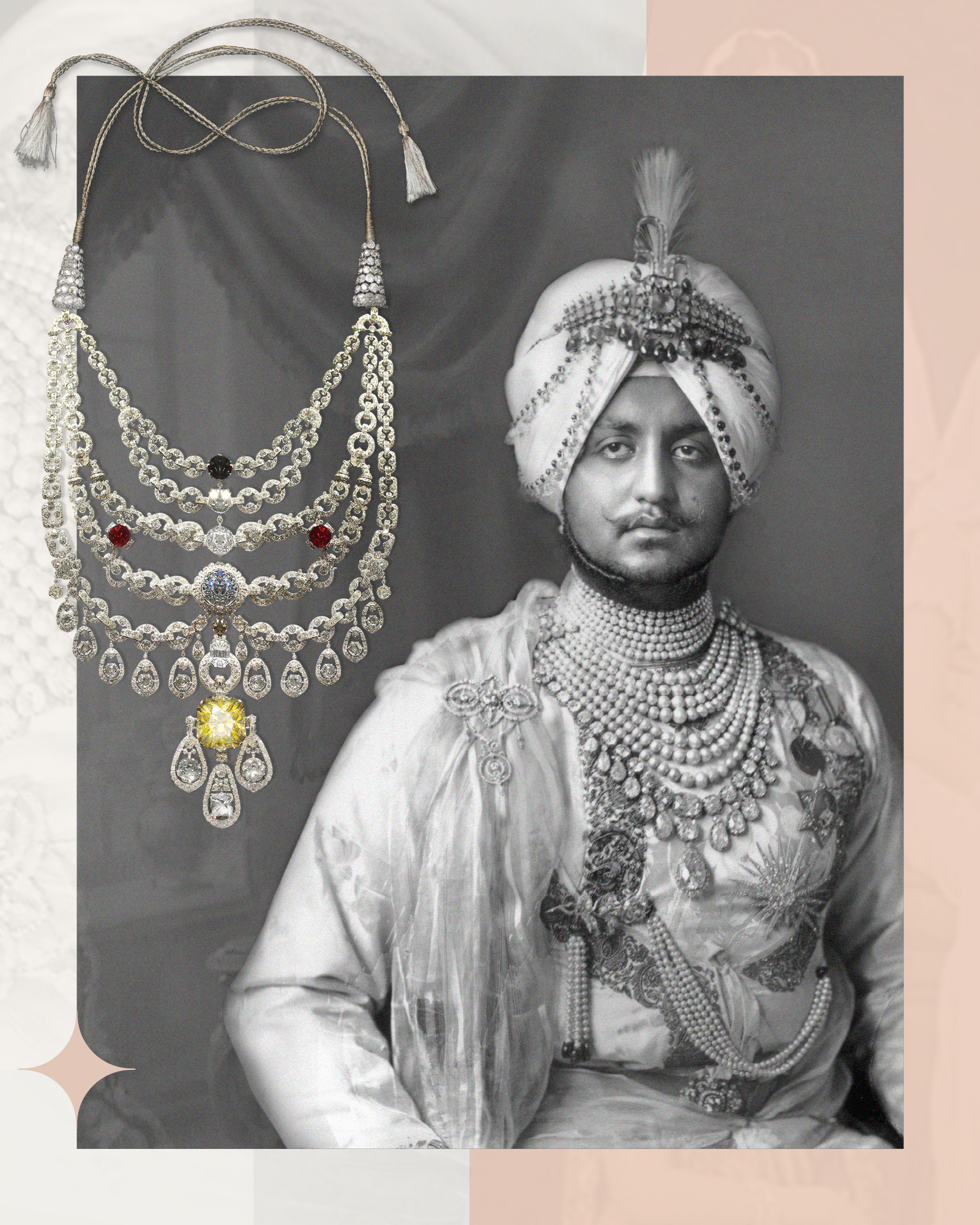
Images via Wikicommons and Getty
Diamonds always signalled an inimitable prestige. These precious jewels symbolized strength, courage, invincibility – and luxury – at its very pinnacle.
The regal elegance of true luxury has never been immortalized more fittingly than in a royal portrait from 1934 of the young Maharaja of Indore, Yeshwantrao Holkar II. In it he sits on a settee, dressed in simple white, wearing a turban on his head. Only when we look closer do we see the magnificent pair of the world-famous Indore Pear Diamonds, a startling 47-carats each, set in a remarkable necklace wrapping around his neck – like two bookends of a brilliant baguette-cut starburst. The Maharaja seems entirely casually unaware of this spectacular decadence on his person, leaning back slightly, his royal sword lying at his feet – the picture of royal, masculine grace.
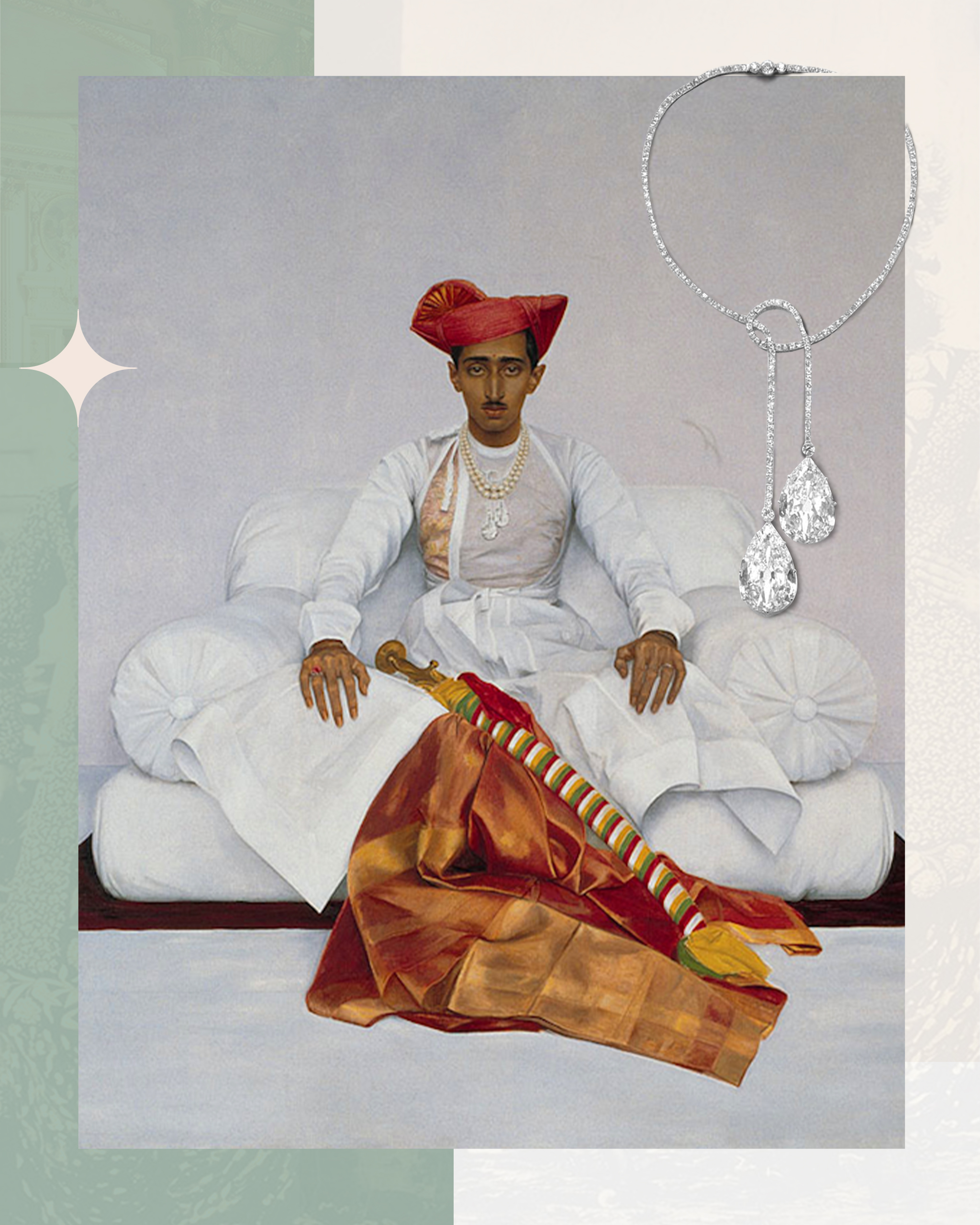
Images via Wikicommons and Chaumet
Only natural diamonds reiterated the meaning of true luxury. Something incredibly rare, astoundingly beautiful, something out of this world itself. That which evokes a deep emotion – and there is nothing as exhilarating as holding a single, sparkling, natural diamond in one’s hands, a star fallen from the skies, one to call your very own.
In the late 1800s, Henry Cyril Paget, 5th Marquess of Anglesey, eccentric, extravagant and a genuine connoisseur of diamonds had a jewellery chest that boasted the rarest of diamonds and designs. One bespoke piece was this – a tiara inspired by Victorian design and pear-shaped motifs with European and old mine cut diamonds amounting to 100 carats. The row of sparklers could be detached and worn as a rivière necklace. This is why diamonds have always stood for something beyond just commonplace, accumulated wealth – it signified the wearer’s identity itself. No wonder diamonds were reserved only for Gods among Men – only Kings were allowed to wear them until the 14th century.
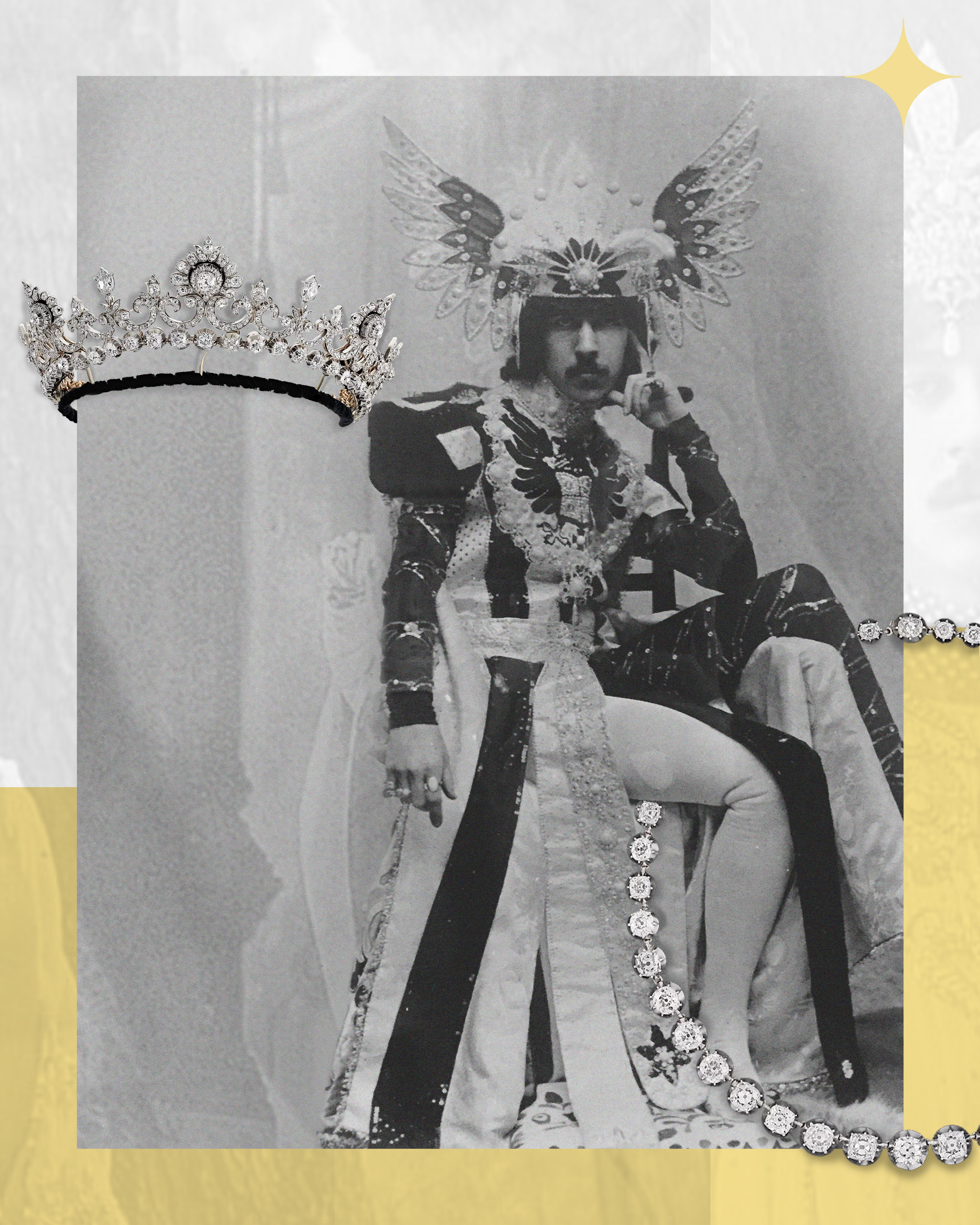
The modern Maharajas of today continue to take forward this incredible heritage of diamonds in their own ways. The king of fashion, designer Sabyasachi points us in the direction for the ultimate luxury for new-age nawabs. The sophisticated, effortlessly masculine gentlemen in his stunning campaigns are swathed in precious jewels – layers and layers of uncut diamonds clustered around their necks. Taking a cue from this, the maverick Maharaja of cinema today, Ranveer Singh, chose to be bejewelled in a spectacular necklace of uncut diamonds for his wedding to his Queen.
Perhaps nothing shines the spotlight on the brilliant future of natural diamonds more than blue-blooded royal – the 21-year-old dapper Prince of Jaipur, His Highness Padmanabh Singh himself. He wears his incredible family heirlooms well and he wears them lightly, effortless in his regality. Shot for the pages of the iconic Vogue Paris by acclaimed photographer Mario Testino, Pacho (as he is lovingly called) stands tall, his royal sword clasped in his hands. And on his turban rests a brooch sparkling with a glittering cluster of diamonds. In this beautiful portrait, his inherent grace reminds us of another young prince we know, the Prince of Indore who, almost a century ago was also immortalized wearing the Indore Pear diamonds with as much quiet power in a portrait.
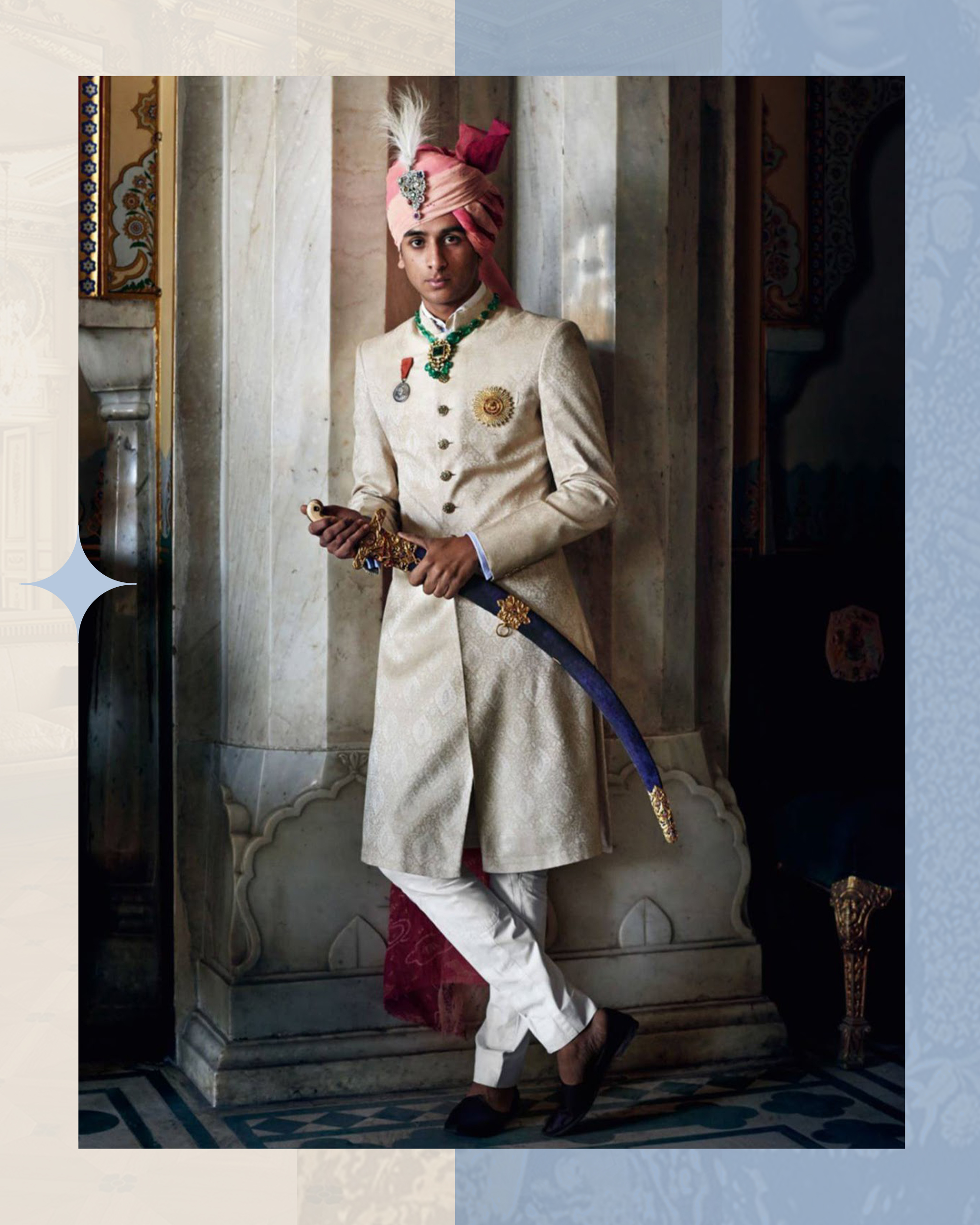
Image via Mario Testino X Vogue
The quiet power of natural diamonds. The definitive sign of royalty. And ultimately, what could be more luxurious than that?
Padmanabh Singh: ©Hindustan Times via Getty Images / Dolce & Gabbana – Runway – Milan Men’s Fashion Week Spring/Summer 2019 / ©Andreas Rentz via Getty Images / ©The India Today Group via Getty Images; Chaumet’s Pear Diamond Necklace: ©Chaumet Paris Website; Cartier Patiala Necklace: ©Cartier Archives; Henry Cyril Paget’s Necklace: ©Hancocks/TEFAF Antiques
